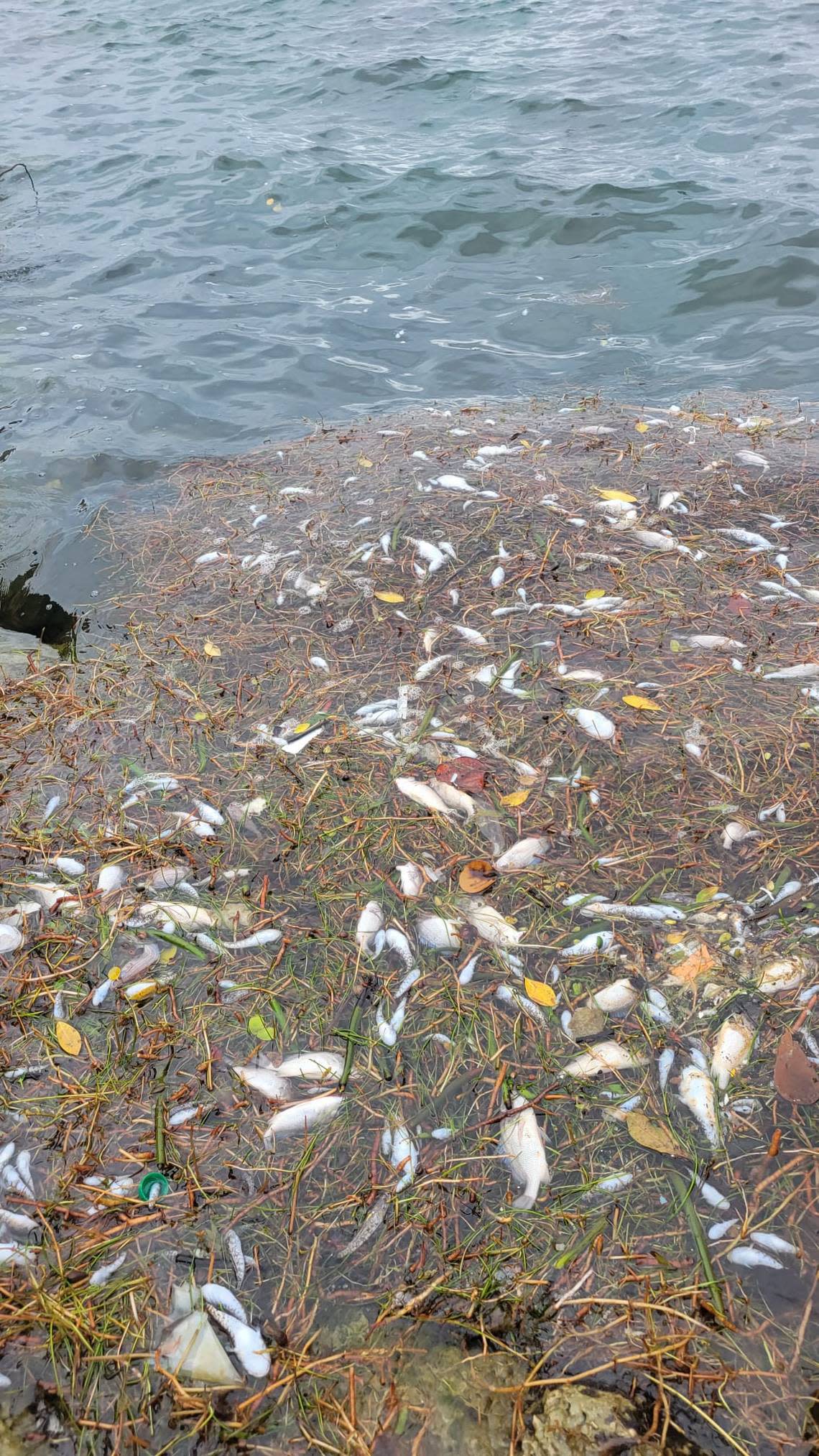Fish kill reported in Biscayne Bay. Blame it on last week’s heavy rains

If you’re in some spots in Biscayne Bay during the weekend, you might be greeted with an unpleasant sight: dead fish floating on the surface.
That’s the unfortunate aftermath of the relentless rain that South Florida experienced last week — and a reminder of much larger fish kills that have plagued Biscayne Bay in the past few years.
The damage this time seems limited. About 2,000 fish were estimated dead in northern Biscayne Bay, with reports from Morningside to North Bay Village and up to 95th Street. The victims were mostly toadfish, a small species that lives on the bottom in shallow coastal areas that tend to be most dangerous for fish, according to Miami Waterkeeper, a clean-water advocacy group.
Biscayne Bay is no stranger to fish kills Since 2020, the bay has experienced at least four fish kills. Miami Waterkeeper said the recent heavy rain was likely to blame for the latest one. The surge of freshwater flowing into the bay lowers salinity, which can drive off or even kill some fish.
Little River, which empties into the bay, is one of the county’s most polluted waterways and has been overflowing with storm water since June 11, according to Miami Waterkeeper.
“The freshwater anoxic flow originating from the Little River and Biscayne Canal likely contributed to the conditions that have led to the fish deaths. It’s important to note that there are salinity-control structures in place that release freshwater into the affected area to alleviate flooding and lower the groundwater levels,” said Adriana González Fernández, Miami Waterkeeper’s science and research director.
The Miami-Dade Water and Sewer Department said there were several wastewater flows across the region caused by the storms but none made direct contact with surface water. But runoff carries pollutants and animal waste that aren’t helping fish either.
“After storms and flooding, residents should generally expect an increase in pollutants such as bacteria, sediment, chemicals and debris in waterways,” Fernández said. “The safety of waterways after storms can vary depending on the severity of the event and the area affected.”
On one of the days of heaviest rains, June 12, Miami Waterkeeper tested South Florida areas, including Little River, for enterococci, a bacteria that is an indicator of human waste, and found that all water they tested was unsuitable for recreational use. It’s not necessarily always a result of storms, but it definitely can be influenced by them, she said.
Miami-Dade Chief Bay and Water Resources Officer Loren Parra told WPLG-ABC 10 that she was “devastated to see these reports, certainly so early in the rainy season.”
The station shot video of dozens of dead fish floating among debris in murky water in the bay on June 18 — days after the region was swamped by up to 20 inches of rain in spots, including Northeast Miami-Dade.
Climate change isn’t helping either. South Florida had a string of fish kills last summer, which was the hottest on record. Researchers blamed it on rising temperatures, which can reduce oxygen in the water and trigger algae blooms that do the same. Climate scientists say It also can turn storm systems wetter.
“Changing climates, characterized by more intense and frequent rain events in South Florida, might exacerbate these fish-kill incidents,” Fernández said. “This trend suggests that such fish kills may become more frequent unless significant climate-mitigation efforts are undertaken.”

